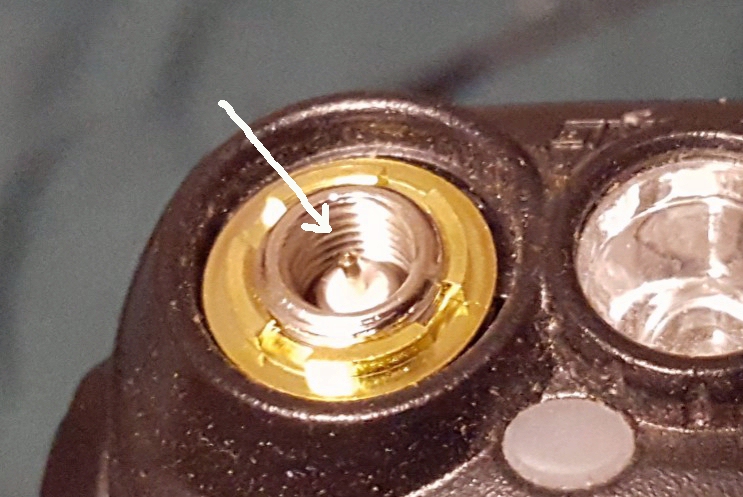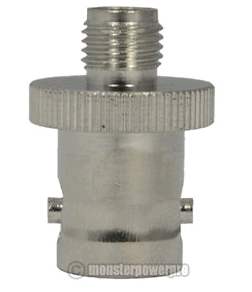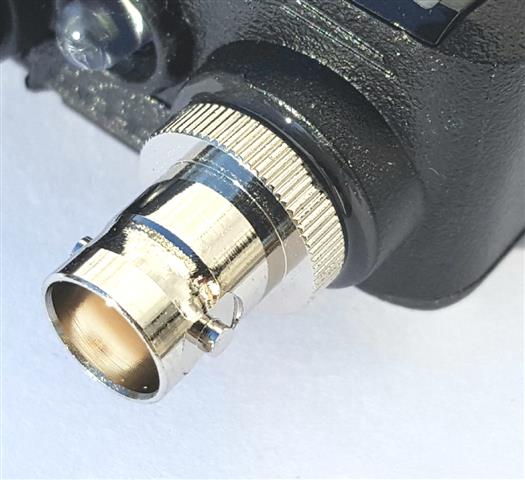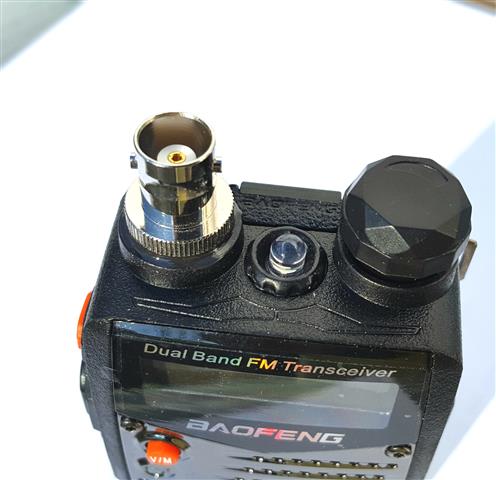
So, you got your new Baofeng UV5R walkie talkie and something's wrong. You go to screw the antenna on and it doesn't screw in. What gives? Well it's simple. The mating jack on the radio doesn't have any
threads as pointed out in the picture below of a good connector. For some reason the non-existing quality control at the factory missed even testing the radio with an antenna.
Another thought is that there are a lot of UV5R Chinese clones out there on
Amazon and the quality control was lacking when these were "tested"
and placed on the market.

You
had only one choice until now. Send it back! If you can. But in some cases it's impossible to contact the seller, especially if it's
overseas or if you purchased it and had it stored for sometime. The time and trouble is almost not worth it. If purchased through Amazon you have a better chance of getting it swapped out for a correct one.
The connector is a "Reverse" SMA or R-SMA type. This is not the industry standard for all hand held walkie talkies. Typically you will find what is called a BNC
connector or standard SMA connector usually found on
many high quality Japanese type handhelds such as Yaesu, Kenwood, Icom, Alinco, etc.
If you wish to use an external antenna in your car or house you usually find a BNC type end on the antenna cable end. In your case you will need to purchase a BNC to R-SMA adapter.

These can be purchased on ebay or other sources. This will work but is a pain to use because the adapter doesn't thread tight in the radio and when you try to remove the BNC connector it unthreads the adapter. Overtightening the adapter can damage the connector on the radio.
But what if you are in a hurry or if you bought it through an unknown vendor at
a hamfest or flea market sale and there's no way of getting your money back or a replacement?
There is a modification you can make which can alleviate these two problems.
If you are savvy enough you can very carefully file the threads off the adapter and file a slight taper in the brass end. Constantly check your work by carefully pushing the adapter onto the radio until it seats all the way. Don't file too much off because you want a slight interference
type tight fit. Use a pair of pliers to carefully twist it off for further filing.
Once you are satisfied you have a good fit, Mix up some strong epoxy or JB Weld™. Carefully fill the groove around the connector with epoxy without getting any on the center connector. Then place some epoxy on the adapter base. Carefully set the adapter
on the radio connector and give it a slight twist. Wait for it to harden. That's all!


Now you have a modified radio with a standard BNC antenna connector so you can connect either a whip antenna, mag-mount mobile antenna or indoor coax easily to your radio. This connector also makes it easy to hook an SWR meter or power meter to the radio for testing too.